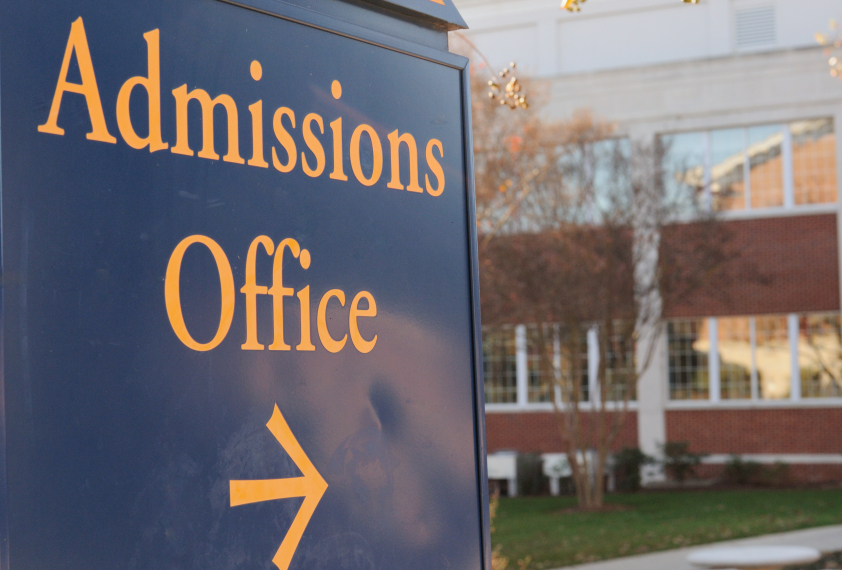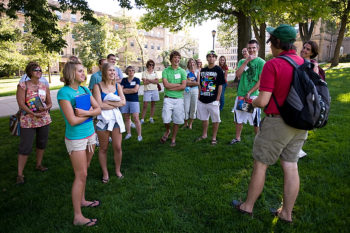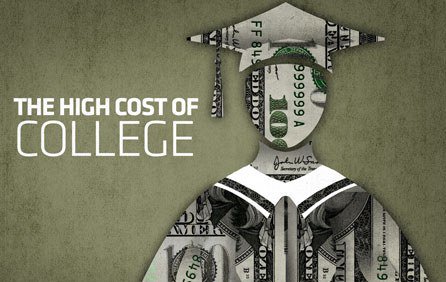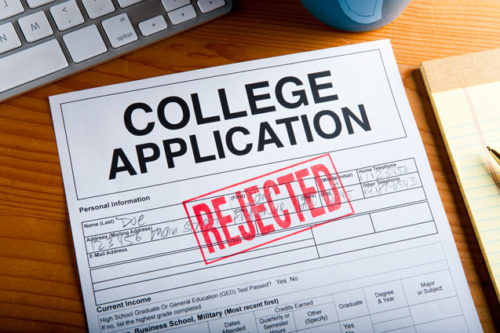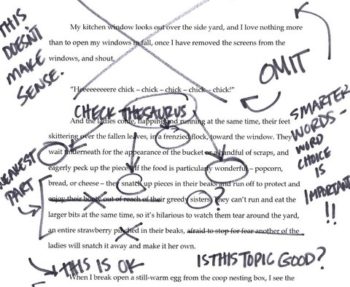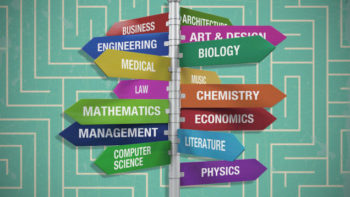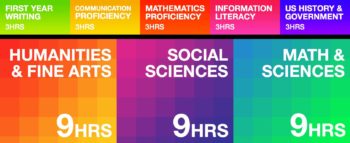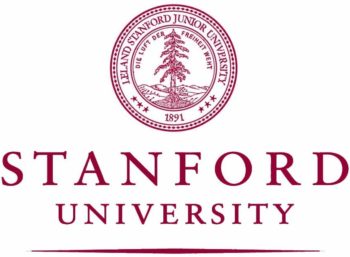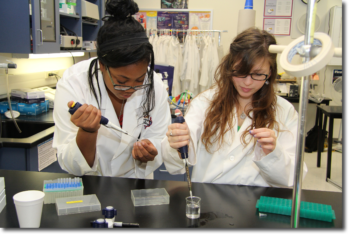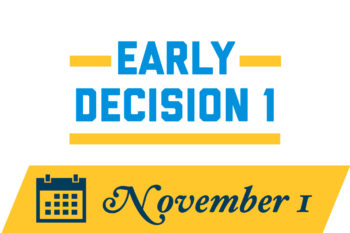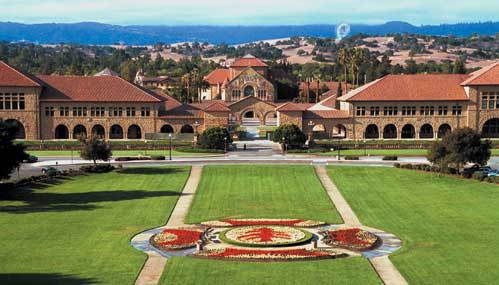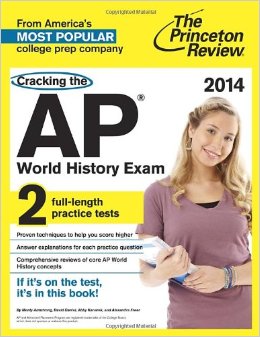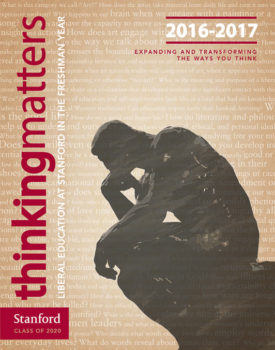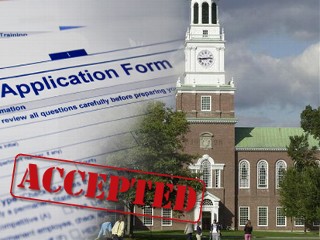
Warning: All Colleges Are Not The Same!!
One of the many misunderstandings that Americans and foreign applicants hold onto about college education is that all colleges are the same. Our college guide is intended to overcome the assumption that US News’ top 150 or 200 colleges all provide roughly the same product/service. In speaking with thousands of families over the last 25 plus years, we have found that less than 5% understood the different kinds undergraduate experiences offered by the various types of colleges and universities. Yes, the assumption goes, schools have their distinctive flavors and culture, but they are all offering a similar program of academics, faculty, and activities. Nothing could be further from the truth. There are some commonalities, but the real story is more subtle than that.
Understanding College Types
Generally, the first step to understanding college education options is to have a useful system of classification. College guidebooks and many folks mistakenly categorize colleges by their competitiveness in acceptance, but this is in no way useful. US News and other rankings systems (totally useless in our opinion) have a system of categories which includes National Universities, Regional Universities, National Liberal Arts Colleges, Regional Liberal Arts Colleges, etc. Grouping colleges in such a manner does nothing to help a consumer understand the important qualities that matter. Instead, a family with a college-bound child would be best served in grouping colleges by their mission, for the mission gives one the best understanding of what the college will actually do with/for your child upon enrollment.
Without further ado, these are the 3 types of American colleges that are most frequently attended by middle class students. We have purposely left off community colleges, technical pre-professional colleges like DeVry, arts schools like Savannah College of Arts and Design, and certificate granting institutions. Our college guide has 3 categories:
- Public Research Universities
- Private Research Universities
- Private Teaching Colleges
Public Research Universities
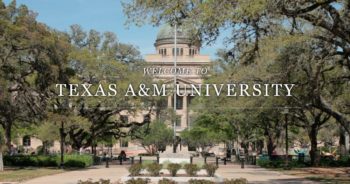 Public research universities are the most broadly attended type of American college option of the three. These are a state’s publicly funded universities (paid for by local taxpayers) which were built to educate a wide spectrum of the state’s young people and to create the breakthroughs and advancements in the various academic disciplines. Names you might know in this group are University of Michigan, UT-Austin, Texas A&M, UCLA, University of Georgia, etc. This group also includes a state’s non-flagship or secondary university campuses such as Cal State Northridge, North Texas State, University of Wisconsin-Stevens Point, Texas Tech, Stephen F. Austin, Northern Colorado, etc.
Public research universities are the most broadly attended type of American college option of the three. These are a state’s publicly funded universities (paid for by local taxpayers) which were built to educate a wide spectrum of the state’s young people and to create the breakthroughs and advancements in the various academic disciplines. Names you might know in this group are University of Michigan, UT-Austin, Texas A&M, UCLA, University of Georgia, etc. This group also includes a state’s non-flagship or secondary university campuses such as Cal State Northridge, North Texas State, University of Wisconsin-Stevens Point, Texas Tech, Stephen F. Austin, Northern Colorado, etc.
The first thing to understand about public research universities is that they are big. Typically, they enroll 25,000 or more undergraduate students, but many are double that size or more. In addition, many of these universities have large graduate school student populations as well.
Big Schools = Big Classes of 250 or More
What does the large size mean from a pragmatic and experiential point of view? Typically, it equates to extremely large class sizes for lower division undergraduates. With general education requirements that force every student to take a handful of introductory courses in each of the major academic disciplines, a logjam almost always ensues. General education requirements are typically the courses that are largest and most boring. These classes are not difficult, but they frequently give students lots of trouble. At some public universities, students will spend 50% of their 4 years or more enrolled in large and dull general education classes.
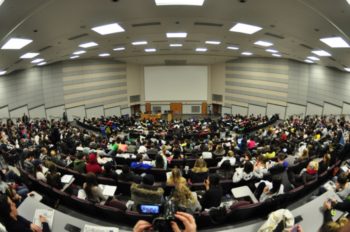 Many students enrolled in Biology 101 or Introduction to Psychology will see class sizes of 250 or more, with classes held in auditoriums. It is not uncommon for classes at public universities to have as many as 1,000 students, or for professors to be simulcast on large video boards.
Many students enrolled in Biology 101 or Introduction to Psychology will see class sizes of 250 or more, with classes held in auditoriums. It is not uncommon for classes at public universities to have as many as 1,000 students, or for professors to be simulcast on large video boards.
Even upper division courses, which are attended only by majors in that subject, can frequently have more than 100 students per class. A recent graduate at LSU, with a major in psychology, reported to us that she did not have one class with less than 100 students during her 4 years at at the university. These universities offer very few classes that are discussion-based, with nearly all classes formatted as professor lectures. Sometimes large lectures are broken down into smaller discussion groups led by graduate-level teaching assistants, but most students will tell you that the discussion groups do not add much educational value.
Accompanying the large class sizes is a general atmosphere of anonymity and bureaucratic headaches. Professors at large public universities are paid and judged on the basis of their research and publishing success, with very little emphasis on the quality of their teaching. In fact, most tenured professors at public universities will be spending the overwhelming majority of their work hours on research and interacting with their graduate students. Going further, many lower level courses will be taught by graduate students (sometimes non-native English speakers) or transient and inexperienced adjunct faculty. One researcher, Andrew Hacker, author of “Higher Education? How Colleges Are Wasting Our Money and Failing Our Kids — And What We Can Do About It,” found that 70% of courses at research universities are taught by adjuncts.
Even when teaching an introductory class of several hundred students, professors typically offer no more than a couple of office hours each week for visits from undergraduates. If you are a struggling student, there will not be a professor looking out for you at a public research university and he or she will most likely not be available to help 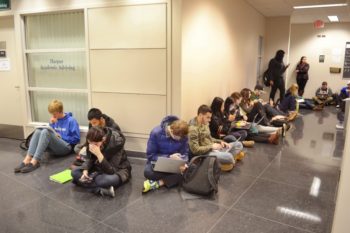 you either.
you either.
Does Anybody Care? Who Will Help Me?
Academic advising may be of decent quality, though many times not, but is frequently difficult to acquire. As with professor attention, a massive number of undergraduate students will be competing for the time and attention of an undersized advising staff. The same is true with regard to career and psychological services as well. Study abroad offerings are usually fairly broad, but limited to university-sponsored offerings only if one wants to receive full credit.
When problems arise, be they academic, personal, or bureaucratic in nature, students at public research universities report difficulty in quickly resolving the issues. As with many of the university’s functions, the general problem is one of scale. Too many students, too few resources.
On the more positive side, public research universities have several outstanding features. Number one, they usually have every major you could ever imagine. Not only can you acquire an engineering degree, you can usually have a specific major in civil, mechanical, computer, or even petroleum engineering. Beyond the standard curriculum and majors such as economics, chemistry, and history, you can typically study specific and applied areas such as architecture, broadcast journalism, nursing, special education, agricultural science, construction science, or sports 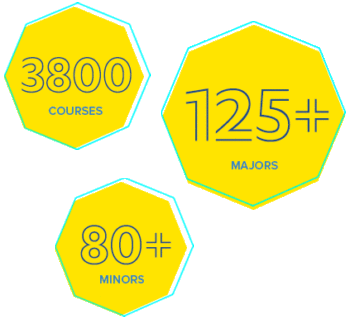 management.
management.
From a technology and laboratory resource perspective, most of the public research universities have great facilities and cutting-edge equipment in their labs. Gaining access to such resources is not always easy though.
The student population at public research universities is usually quite diverse. Most of these universities make a strong effort to enroll minority students and those who come from less-privileged backgrounds. As for activities, most public research universities have big-time sports programs and lots of support and interest from undergraduate students. In terms of clubs and organizations, you will find nearly any interest represented from the arts, politics, media, foreign cultures and languages, to academic specific clubs. One may have to compete with large numbers of fellow students though, if one wants to join the college orchestra, newspaper, television station, or comedy troupe. Fraternity and sorority offerings are usually pretty broad and important on these campuses, with lots of students involved in Greek life.
The Buzz of 25,000 or More Young Adults Living Side by Side
Socially, there is a buzz that surrounds life on many public research campuses. Such a large number of young adults living side by side and free from the constraints of family and societal pressures leads to an energy that is unmistakable. If you are into sports and school spirit, the excitement of attending college football or basketball games at UT-Austin, the University of Alabama, Indiana University, or the University of Oregon cannot be matched.
In choosing the right college for you, public research universities may be attractive. Usually they are less-expensive (if you are a state resident) when compared with private colleges, but they do not typically give financial aid to middle class students. Of course, these schools offer the classic “college experience” that most students are searching for. But, remember that in today’s hyper-competitive market for graduate school and jobs, your first concern must be acquiring a top-notch education and strong grades. High quality education is certainly available at public research universities if you search for it, but it cannot be assumed. If you are the type of student who requires attention and guidance from professors and staff, then you need to think twice before enrolling at a public research university.
Families must be careful to thoroughly investigate the fit for their child in such an atmosphere. Number one, not all departments at all public universities are high quality, even in the case where a university is held in extremely high regard. Second, the method of instruction and examination rewards those who are self-directed learners. If your child is highly motivated and able to breakdown lectures, concepts, and textbooks with little assistance, then he or she will likely have a solid experience at a public research university. If, your child lacks self-discipline, needs high levels of attention and discussion for understanding of academic materials, or is intimidated by busy and dismissive faculty or staff, then you should think twice before sending your son or daughter to a public research university.
Private Research Universities
Private research universities occupy a middle ground between the massive public university options and the small colleges that most refer to as liberal arts colleges. Most private research universities have between five and seven thousand undergraduate students, though some have 10,000 or more undergraduates. Well-known medium size private research universities include: NYU, University of Southern California, the Ivy League schools, SMU, Duke, Northwestern, TCU, Baylor, Vanderbilt, Boston University, and the University of Miami. The characteristics shared by these schools are as follows: funding by private tuition and endowment, lots of big-name faculty and resources, and a focus on cutting-edge research by professors and graduate students.
Like public research universities, professors at these colleges are paid and promoted largely by their ability to create important research and published scholarly work. Most of these kinds of colleges have major graduate programs and professors will spend much of their time grooming their Master’s and PhD candidates. However, unlike at public universities, most private research universities put pressure on their faculty to give some attention to their undergraduate students because Mom and Dad are paying hefty tuition bills. The amount of attention varies by 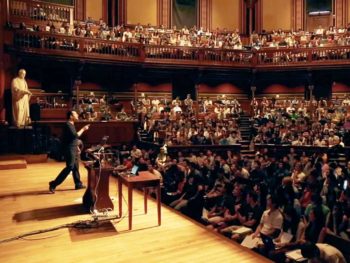 university and by department, but generally, private research university students will find that a healthy portion of their professors are willing to support and guide them.
university and by department, but generally, private research university students will find that a healthy portion of their professors are willing to support and guide them.
High Prestige and Medium Size Does Not Guarantee Attention from Faculty
In terms of the academic experience, private research universities offer varying pedagogical emphases, with a mix of discussion-based classes, lectures, and labs. However, one can expect that many of the lower division classes will be larger, lecture-based courses. One recent client, who attends an Ivy League university, was shocked and saddened to find that our warning to her about large class sizes even at exclusive and prestigious universities was actually true. It turns out that every one of her first year classes had more than 100 students, with very little interaction with professors. This example is not the rule, but it is not an outrageous exception either.
From a curricular standpoint, some of the private research universities offer nearly as many options as the flagship public research schools and most will have nearly every academic and pre-professional option on offer. Engineering is available at most private research universities, as is business (though both are absent from most of the Ivy League schools), but some highly specialized areas like nutrition, kinesiology, graphic design, or architecture will be less widely available.
Curriculum Questions
While nearly all colleges in the United States have lightened their general education requirements, private research colleges will vary in terms of the broad educational curriculum required of every graduate. Some, like Columbia and Boston College, still demand a heavy core curriculum of required courses, while others require a bare minimum of one course from each of the core academic disciplines (science and mathematics, humanities, arts, social sciences). There are a number of Catholic and Christian private research universities that require coursework in theology as 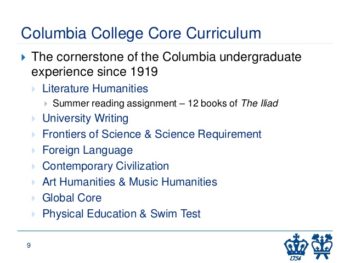 part of the distribution requirements. Schools like Baylor, Santa Clara, and many others do not necessarily require one to study scripture, but insist that spiritual and ethical education is an important part of the college experience.
part of the distribution requirements. Schools like Baylor, Santa Clara, and many others do not necessarily require one to study scripture, but insist that spiritual and ethical education is an important part of the college experience.
If one could make a broad generalization about education at private research universities, it might read as thus: you will probably get some attention from professors and smaller classes as you move into your final two years, but there’s no guarantee of real guidance and connection. Some universities and departments offer research and guided independent study experiences to nearly every student on campus. Others advertise great opportunities for research and internships, but fail to deliver on those promises. Advising is much the same.
Private research universities generally offer more available academic and career advising as compared to public research universities, but your mileage may vary by school. Some of the medium sized private schools do a great job of supporting and assisting their students, while others are downright terrible. And in no way should one equate prestige, price, or size with quality of academic programs and attention from faculty and advisers. Some of the “elite” universities are the least generous with guidance.
At private research universities, there is an increasing effort to diversify the student body. Historically, many of these schools have been filled primarily with upper middle class students, but that has changed over the last two decades. Some of the private research schools have fantastically diverse student bodies with large numbers of international students and students of color or less-privileged backgrounds. Some are still quite homogeneous, with most students sharing a similar successful suburban, professional family background.
Big Time Sports, Medium Sized Universities
 Sports have been a calling card and a major area of investment for private research universities over the last 25 years. One need only look at USC, Syracuse, TCU, Vanderbilt, and Duke for examples of schools building a national reputation of excellence through the rise of their sports programs. TCU is a great example of how sports success can transform a university. Following their Rose Bowl appearance in 2011, TCU received more than double their annual average number of applications. Suddenly, a school that was somewhat selective became much more selective. Following the above examples, many of the private research universities offer the same kinds of resources and activities that were once only the domain of big public universities. Massive new football stadiums and arenas give students the same buzz and rush of adrenaline as their public university counterparts.
Sports have been a calling card and a major area of investment for private research universities over the last 25 years. One need only look at USC, Syracuse, TCU, Vanderbilt, and Duke for examples of schools building a national reputation of excellence through the rise of their sports programs. TCU is a great example of how sports success can transform a university. Following their Rose Bowl appearance in 2011, TCU received more than double their annual average number of applications. Suddenly, a school that was somewhat selective became much more selective. Following the above examples, many of the private research universities offer the same kinds of resources and activities that were once only the domain of big public universities. Massive new football stadiums and arenas give students the same buzz and rush of adrenaline as their public university counterparts.
Greek life is big at private research universities as well. Some campuses will see half or more of their students pledging fraternities and sororities, but others, particularly the big-city schools like NYU or Boston University will have smaller Greek participation. In terms of clubs, activities, and events, this pool of schools is top-notch and students will find plenty of outlets for their interests. Study abroad is emphasized at many schools of this type and large portions of the student body will study at foreign campuses, some of which may be just a foreign outlet of the same university the student is attending (ex. NYU-Paris).
For the average student, social life at a private research campus will never be boring. You will always find enough action and energy to keep you busy and even with a smaller private research university, you’ll find 5,000 or so classmates at your fingertips.
To summarize, private research universities offer a nice hybrid of the outstanding variety of academic and extra-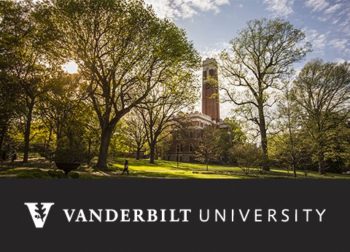 curricular options at public research universities without the scale problems and bureaucratic obstacles of massive public institutions. That said, one would be mistaken to assume that by attending a private research university, one will be nurtured and guided by professors and faculty. There are many excellent and supportive universities in this pool, but there are equally as many that are falling way short of their reputation and marketing promises.
curricular options at public research universities without the scale problems and bureaucratic obstacles of massive public institutions. That said, one would be mistaken to assume that by attending a private research university, one will be nurtured and guided by professors and faculty. There are many excellent and supportive universities in this pool, but there are equally as many that are falling way short of their reputation and marketing promises.
To find out the truth of what a private research university offers on a regular basis, you need to visit and talk with current students. They will be forthright about their experiences and the reality of life on that campus. Will you get your academic, personal, and social needs taken care of? You will need to do some digging to find out for certain.
Private Teaching Colleges (Often Called Liberal Arts Colleges)
This pool of undergraduate schools is under-appreciated by the average middle class student and family. Schools like Trinity University (TX), Southwestern (TX), the Claremont Colleges, Wesleyan University, Oberlin, Sewanee, and Connecticut College provide top notch education and extra-ordinary student support and records of job/graduate school placement. Yet, most families and students are unfamiliar with these schools.
Many hear of the size (typically ~2,000 students), the category name “Liberal Arts,” and the lack of pre-professional programs (“what would I do with an English or chemistry degree?”), and immediately dismiss the entire pool of schools. In our experience of nearly 30 years of working with students and families on college admissions, we find these schools to be the least popular and the least likely to inspire enthusiasm in high school students’ hearts and minds. Despite Teaching Colleges’ lack of broad appeal to young adults and families, we feel that they are the most valuable and reliable set of undergraduate institutions in the U.S.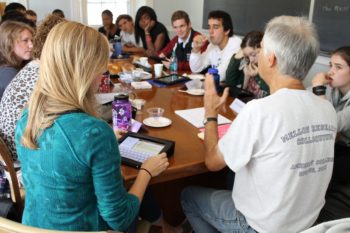
In an economy that is hyper-competitive and increasingly directed towards high levels of technical, communication, research, and reading skills, private teaching colleges are the only pool of schools that can be universally counted on to provide an appropriate education that leads to competitive job options or fruitful graduate school placement immediately upon graduation. There are several factors that contribute to the high quality of a teaching university’s educational offerings, but the most outstanding feature is the intimate scale and setting.
Teaching Colleges Ensure Access to Small Classes and Professor Guidance
At such an institution, students will find professors who are paid to teach, support, and collaborate with students as their main function. While professors at these schools might be top notch researchers in their field, publication and notoriety is not their primary goal. Further, most of these colleges have no graduate students at all, while others have but a small number of graduate students to compete for professor attention.
Students at these colleges can be certain that they will find small class sizes from their first day on campus. While an occasional class of 35-50 might be found, almost all classes will be 25 students or less, with many courses taught in a seminar fashion. Nearly all courses will be discussion-based and ample time is given to supporting student inquiry, answering student questions, and encouraging further exploration of student ideas.
Outside of class, professors are highly available for extra attention related to academic needs. Further, many professors at teaching universities will encourage students to visit with personal, career, and vocational concerns as well.
When students need help, professors and staff are there to support them. Most professors know their students on a first-hand basis and will take the time to help students write and re-write essay drafts or to have a cup of coffee and chat about homesickness.
First-Name Treatment at Career Services Office
Career services and alumni work closely together in order to help students gain job placement upon graduation. In  areas like mental health services, study abroad, graduate school admissions assistance, and student affairs, staff look out for the students and are both flexible and available with easy access. It is not uncommon for professors and staff at teaching universities to personally oversee a student’s job search or graduate school placement.
areas like mental health services, study abroad, graduate school admissions assistance, and student affairs, staff look out for the students and are both flexible and available with easy access. It is not uncommon for professors and staff at teaching universities to personally oversee a student’s job search or graduate school placement.
Besides the small size of classes and the highly supportive faculty and staff, there is a third factor that encourages high quality in academics at teaching colleges. That factor is the quality of the curriculum and materials that are used in coursework. While students at public and private research universities will often spend their first two years digging through big, boring, and general textbooks and survey coursework that often fails to engage, students at teaching colleges will read original academic works that are interesting and challenging from their first day on campus.
The method of student evaluation by professors will look different than their research university colleagues as well. Whether in biology, computer science, history, or economics, students will write research and synthesis essays as their primary mode of evaluation. Further, students will be expected to present material to classmates in both individual and group assignments from day one. This gives students at teaching colleges a huge leg up over their research university compatriots who will spend two years, if not all four, taking multiple choice tests as their usual form of evaluation.
The major academic weakness at teaching colleges is the lack of highly specialized and pre-professional programs. While some schools, like Trinity (TX) and Southwestern (TX) offer business and other pre-professional majors, most of these colleges stick to a more traditional array of majors. By no means are their offerings limited to just the “liberal arts.” You can find some of America’s best Chinese, computer science, Latin American studies, music, drama, geology, biology, and physics programs at teaching college campuses.
The traditional curriculum is not sufficient for those who want to work in a highly specialized field immediately upon graduation. If you are intending to go to work as a petroleum engineer upon college matriculation, then you are better served by attending a research university that offers an undergraduate major in your area of interest.
Easy Access and Outstanding Placement Rates to Top Graduate School Programs
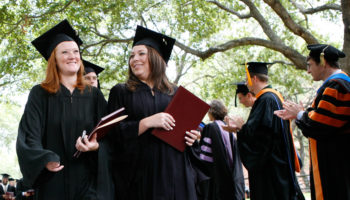 For most students, this is not the case. In fact, graduate school admission staffs, including those at medical, MBA, and law school programs advise students that they would prefer that applicants get a strong broad-based undergraduate education with courses that teach them how to read, write, and reason abstractly rather than choosing a specialized pre-professional program.
For most students, this is not the case. In fact, graduate school admission staffs, including those at medical, MBA, and law school programs advise students that they would prefer that applicants get a strong broad-based undergraduate education with courses that teach them how to read, write, and reason abstractly rather than choosing a specialized pre-professional program.
In Dr. Shumsky’s tenure as a member of graduate academic and medical school admission committees at the University of Virginia and Northwestern University, he found that graduates of teaching universities, regardless of their undergraduate major, were the most highly sought after candidates. At UVa Medical School, English majors from teaching universities were frequently amongst the first candidates to be accepted.
Socially, teaching universities do not generate the same kind of buzz that 80,000 screaming college football fans will create. Social life is typically more intimate, as it is usually easy to get to know nearly all of your fellow classmates from first-year students to seniors. Student life and activities are closely tied together, with all students having access to school theater troupes, art and music facilities, school media and publications activities.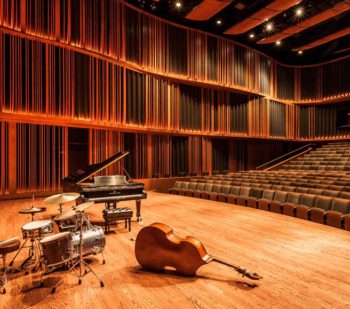
Students at teaching universities will find an encouraging participative atmosphere. Even if you have never acted before, you will still have the opportunity to sign up and join the school productions. While at public research universities, access to music or art studios is limited only to majors, anyone at a teaching university can use the school’s equipment and facilities. The same is true with college radio, newspaper, TV, and film outlets. If you want to participate, you just sign up and dive in.
Plenty of Fun, But Less Buzz
Most students gather at parties on-campus or in surrounding apartments and homes. Even though one will not find a raging party going 5 or 6 nights a week like at some larger universities, students at teaching universities still have lots of fun. The keg parties will be for 50 rather than 500 students. Universities of all sizes bring in loads of speakers, musical acts, and have social programming and events happening nearly every night of the week.
Diversity tends to be less widespread at teaching universities. You will certainly find plenty of students of color and students from all over the globe, but there will typically be a much smaller number of students from less economically privileged families as compared to public research universities.
Summary
The breadth of American college options give a college-bound student lots of variables to think about. We hope our college guide deepens your understanding, dear reader. The good news is that there are many fantastic options in each of the 3 pools of schools outlined in this guide. The keys to choosing the right options are awareness and honesty. College applicants and their families need to have frank discussions about what factors are most important to the student, where the student will likely be happiest and most successful, and what the parent expectations are. The biggest obstacle in both choosing colleges and obtaining a successful college experience is fantasy.
Most high school students are far too wrapped up in media and social imagery and hyperbole about college being the best years of your life. This seductive idea has led far too many students to pursue “the classic college experience” and possibly reduce future opportunities. College should absolutely be a fun time, with plenty of social life and parties, but the bottom line is acquiring the skills and experiences that will lead to success in the job and graduate school marketplace. You must understand your needs in terms of learning support, social stimulation, and guidance.
Today, more than ever before, simply matriculating from college will not guarantee prosperity and job security. The  expectations of employers and graduate schools have increased several-fold over the last two decades. You must do well in college from a GPA standpoint (3.3 GPA is a good goal) and participate in the out of class activities that employers and graduate schools value if you want to reach the bright future that you imagine.
expectations of employers and graduate schools have increased several-fold over the last two decades. You must do well in college from a GPA standpoint (3.3 GPA is a good goal) and participate in the out of class activities that employers and graduate schools value if you want to reach the bright future that you imagine.
Support from professors and staff will make that internship, research project, or study abroad opportunity much easier to acquire. These experiences can separate you from the herds of applicants for your first job or graduate school placement. Some students are organized, driven, and mature enough to make their way through college without faculty support, but most are not. If you or your child is a current high school student, then you would be well-served to reflect on this key point immediately.
